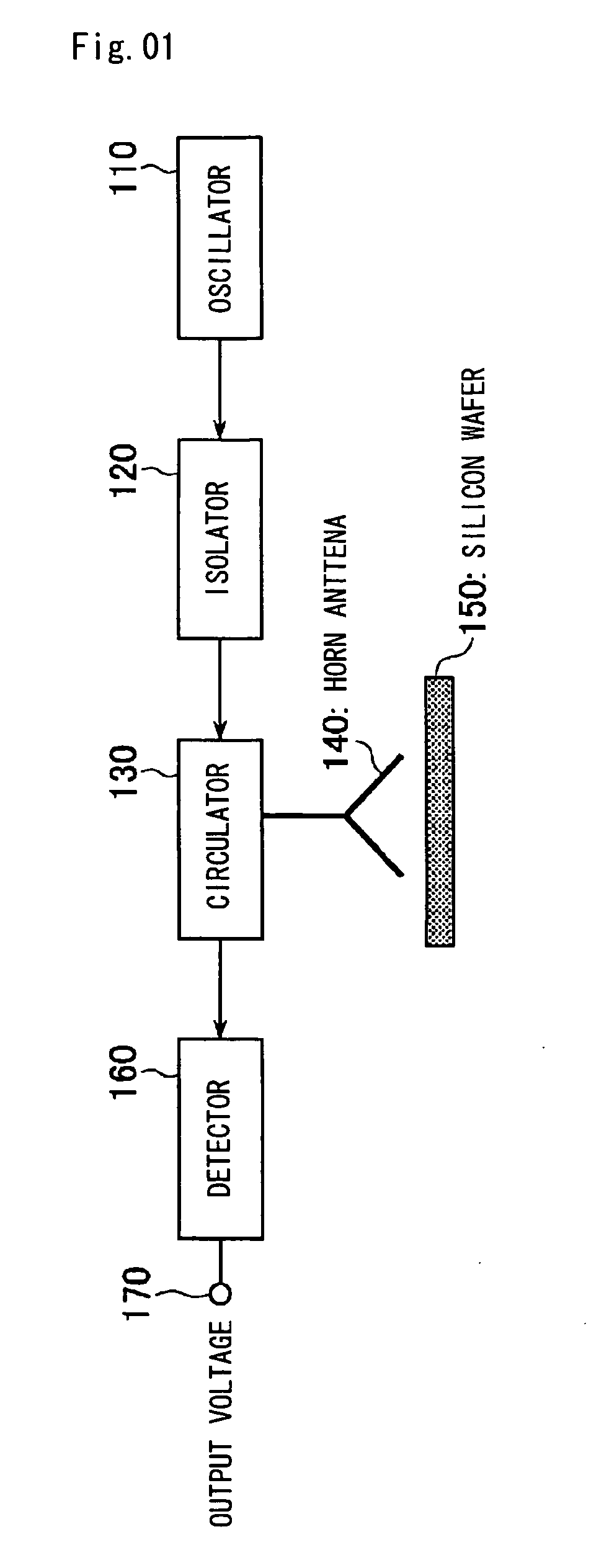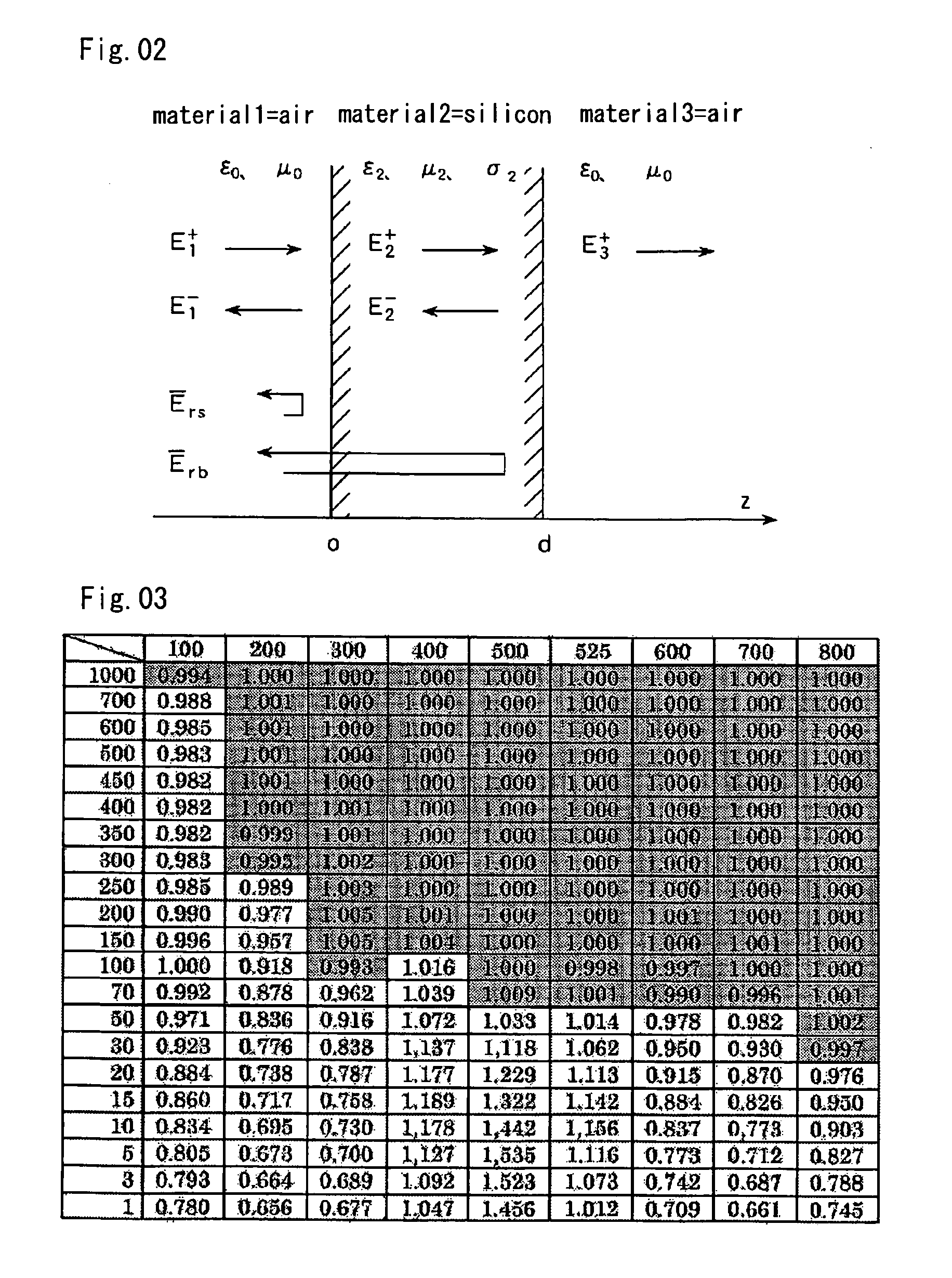Noncontact conductivity measuring instrument
a conductivity measurement and non-contact technology, applied in the direction of instruments, individual semiconductor device testing, resistance/reactance/impedence, etc., can solve the problems of large and expensive network analyzers, inability to dedicate sample measurement with microwaves, and difficulty in using network analyzers as industrial instruments, etc., to achieve simple and compact configuration
- Summary
- Abstract
- Description
- Claims
- Application Information
AI Technical Summary
Benefits of technology
Problems solved by technology
Method used
Image
Examples
embodiment
[0026] In the configuration of the measuring instrument with the microwave, actually the silicon wafer was used to measure the conductivity.
[0027] Seven n-type silicon wafers S1 to S7 were prepared as a specimen. In the silicon wafers S1 to S7, a diameter was 100 mm, the thickness was 525±≅μm, and P was doped. The silicon wafer used in the measurement was formed by a cz method, and mirror polishing was performed to the surface used in the measurement. The silicon wafer conductivity a measured by the four-probe method ranged from 58 to 212 S / m. A copper plate, in which the conductivity was 2.8×107 S / m and the dimensions were 50×50×2 mm, was also prepared. It is assumed that the absolute values and the output voltages of the reflectance of the silicon wafers S1 to S7 are set at |Γk| and vk (k=1 to 7) respectively and the reflectance and the output voltage of the copper plate are set at |Γcu| and vcu respectively. At this point, because it is thought that the total reflection of the m...
PUM
 Login to View More
Login to View More Abstract
Description
Claims
Application Information
 Login to View More
Login to View More - R&D
- Intellectual Property
- Life Sciences
- Materials
- Tech Scout
- Unparalleled Data Quality
- Higher Quality Content
- 60% Fewer Hallucinations
Browse by: Latest US Patents, China's latest patents, Technical Efficacy Thesaurus, Application Domain, Technology Topic, Popular Technical Reports.
© 2025 PatSnap. All rights reserved.Legal|Privacy policy|Modern Slavery Act Transparency Statement|Sitemap|About US| Contact US: help@patsnap.com



